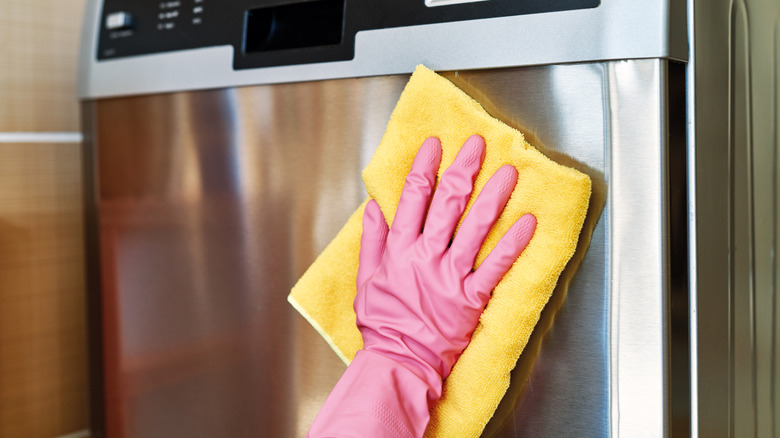The Type Of Metal You Should Never Clean With Hydrogen Peroxide (& What To Do Instead)
When it comes to home cleaning, many people are choosing to use solutions they have around the house rather than relying on commercial products designed for such purposes. Common alternatives often include vinegar as a versatile cleaning tool, baking soda, and even hydrogen peroxide. Hydrogen peroxide (H2O2) is typically available in 3% concentrations at drugstores, and it was traditionally used as a first aid item because of its antiseptic qualities. These components are what have prompted many people to turn to hydrogen peroxide for cleaning a variety of surfaces, as it can possibly kill germs and even remove stains. The problem is that hydrogen is not safe for certain metal surfaces, including those made with brass or stainless steel.
Not only should you never use hydrogen peroxide on copper surfaces, but the antiseptic is also considered unsafe for other metal surfaces like stainless steel and brass. Comparatively speaking, hydrogen peroxide may be less corrosive than bleach. It can still cause stains and corrosion in some surfaces, however, including metal. Needless to say, hydrogen peroxide can cause a lot of damage to brass and stainless steel surfaces, which can then lead to potentially costly repairs. It's also worth noting other mistakes when using hydrogen peroxide to clean around the house as well. Instead, you should use water and dish soap or baking soda.
Never clean stainless steel and brass surfaces with hydrogen peroxide
Hydrogen peroxide releases oxygen bubbles when applied to surfaces. In fact, if you've ever seen the liquid bubble up, this essentially means the product has created a chemical reaction. When hydrogen peroxide contacts metal surfaces, this leads to an oxidation effect. Metal oxidation is not desirable, as this indicates the presence of metal oxides that can contribute to corrosion. Stainless steel can suffer from both corrosion and stains as side effects from hydrogen peroxide exposure, while brass can both corrode and tarnish if you clean it with this product. These permanent damages can inevitably ruin the look of certain metal appliances and fixtures made with these metals. You can still create DIY cleaners and polishers for stainless steel and brass without resorting to chemicals or the erroneous use of hydrogen peroxide, though. Simple everyday cleaning is best achieved with water and dish soap applied with a soft cloth for these types of surfaces.
To polish stainless steel, dissolve 2 tablespoons of baking soda in one quart of warm water. Dip a clean microfiber cloth into the solution and wipe onto the surface before rinsing with a separate damp cloth. Baking soda is an alkaline substance that can help remove stains and caked-on foods, but it's still gentle enough to use on metal. Brass, on the other hand, may be polished with a recipe of equal parts cornstarch and salt, along with a small amount of white vinegar. After applying with a soft cloth, be sure to also rinse away well with a separate cloth dipped in water and a small amount of dish soap.

